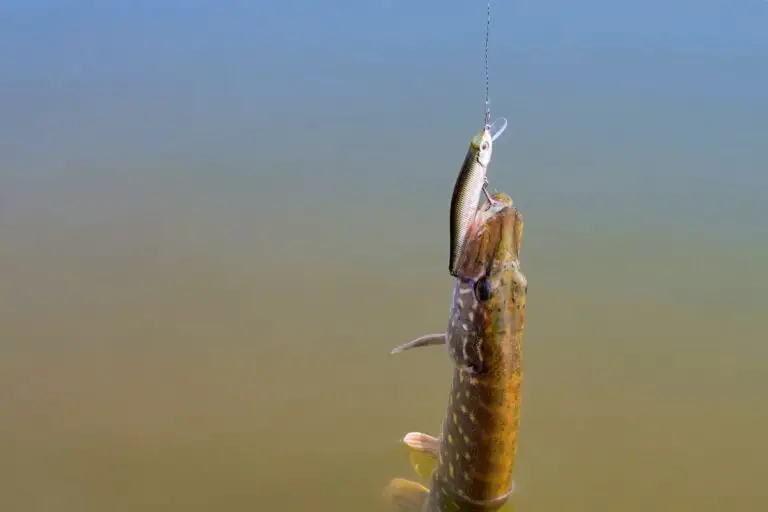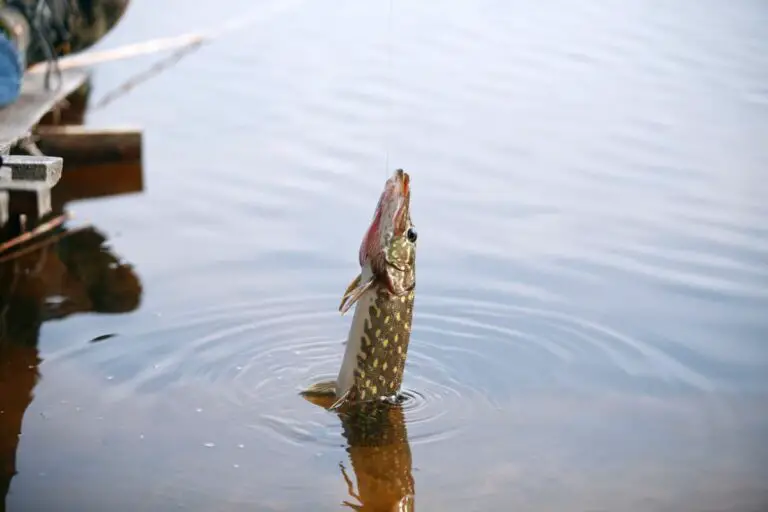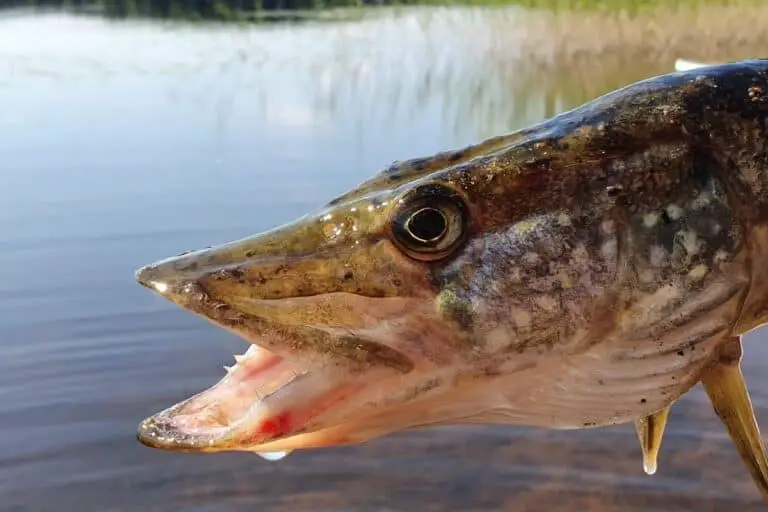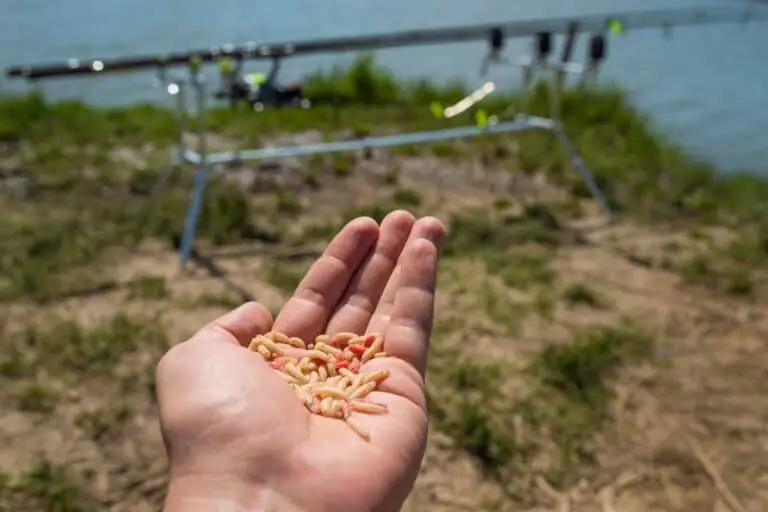Is Pike Good to Eat? 3 Amazing Recipes You Need to Try Today
Some hard-core pike anglers tried to discover if their good vicious fight can result in a tasty meal on their dinner table later, and turns out it can be! But it’s not all about the taste, are you wondering too whether pike is good fish to eat in general?
Is pike good to eat? Yes, Pike is good to eat. They have nutrients that help your body to be healthy including selenium, vitamin D, vitamin B-12, and niacin. Pike is also very tasty and appeals to many people when done right, and you can cook it in different ways.
Read on to be introduced to popular pike in the kitchen, whether you’re already familiar with it in your fishing net or not.
Table of Contents
The Benefits of Eating Pike

Pike not only constitutes a tasty meal when cooked right, but it also benefits your body on so many levels with different nutrients. It’s a great source of protein that your body uses to build and repair itself.
It’s also rich in vitamin D that your body gets from the sun. On days when you’re not exposed to sunlight, it’s important to eat meals that have vitamin D to maintain a healthy level of it in your body.
Pike also has selenium that benefits your immune system and helps lower oxidative stress in your body, which enhances immunity and reduces inflammation. It has vitamin B-12 that is vital to the proper functioning of your nervous system, as well as the healthy production of your red blood cells protecting you from Anemia.
Niacin, also known as vitamin B3, is also found in pike. Your body uses this vitamin to turn food into the energy essential for your daily activities. It also helps keep your nervous system, digestive system, and skin in a good condition.
Eating pike will provide your body with Phosphorus as well. It cooperates with calcium to keep your bone and teeth in a healthy condition. It helps enhance the recovery process of bone loss and loss of mineral density.
Pike also has levels of Isoleucine, Lysine, tryptophan, threonine, valine, histidine, leucine, manganese, Vitamin B6, magnesium, Iron, Zinc, Calcium, Copper, and Potassium. These can all help your body in different ways and make up for the daily nutrients it loses. These substances can help cure:
- Anemia
- Stress
- Obesity
- Muscles tension
- Kidney cramps
- Digestive system issues
- Immunity dysfunctions
- Skin conditions such as dandruff, eczema, acne, dry skin, psoriasis, melanoma, and hair loss.
Are there cons to eating pike?
Generally, there are no serious cons to eating pike. It’s true that pike, like some other species, contain mercury in their bodies. Big predator fish are more likely to have more mercury than smaller ones due to a process called bioaccumulation. However, it’s not unsafe to eat and won’t affect your health if you correctly fillet it and limit your overall consumption.
Two meals per week is a safe consumption that ensures that you get all the protein and nutrients and avoid the possible cons, it’s even safer if you’re eating small pike.
There are special precautions for special populations like kids under 15 years old, pregnant and nursing women, and women who are trying to get pregnant. It’s safer for these populations to eat just one meal per month.
Do Pike Fish Taste Good?

Pike tastes better than most people think. It used to be widely eaten in the UK ages ago, but its popularity dropped in modern times for some reason, most likely because of how it has too many bones to be cleaned that can be hard to fillet.
Pike has a fishy sweet taste. It’s similar to how muskies taste and can be close to the sweetness of walleye. Many people enjoy the taste of pike in different cooking ways. When dipped in butter, its taste is similar to what lobster tastes like as well.
How to Fillet Pike Easily
Remove slime first
Before getting to the filleting phase you may be annoyed with the pike slime, believe me, I’ve been there! Pike tend to be extra slimy and this can make it hard to grasp while cleaning. Try these tips for removing slime:
- Prepare a big bucket and clean it very well.
- Fill its ⅓ with hot-to-warm clean water.
- Add about half a gallon (1 liter) of vinegar.
- Place the pike in the bucket and keep stirring around until the slime falls off.
- Wipe it with a cotton towel to make sure there are no traces left.
Some people use papers when cleaning a pike and they confirmed that it is effective when it comes to slime removal. The slime sticks to the paper and makes the fillet process a little easier. Other people tried filleting and cleaning the pike when it’s still frozen, the frost may be annoying but the slime is way more controllable.
I have made a complete guide on how to remove slime from pike in different ways here, I recommend you check it if you want all the details.
Fillet pike
Now that is easy to get a proper grip on your upcoming tasty meal, follow this simple guide to easily fillet pike:
- Get a fillet knife. You can get a special filleting kit on Amazon that can enhance your experience.
- Remove the head with a vertical cut just behind the gill plate.
- Cut along the backbone with a horizontal cut ending at the tail.
- Cut ahead of the dorsal fin by another vertical cut.
- Work your knife inside the fish parallel to the backbone in the middle
- Slice along with the Y-shaped bones.
- Turn the pike over and repeat the previous procedure to slice the other side.
- Cut the flesh around the backbone horizontally. It’s going to be easier by now.
- Cut the piece with the pelvic fins in half and get rid of the pelvic girdle.
- Remove all skin from all parts you’re done filleting.
3 Delicious Recipes for Pike
Buttery-Lime Basted Muskie with Spicy Tropical Sauce
Ingredients:
The Pike and Baste:
- 2 pounds of pike fillets
- 4 tablespoons of lime juice
- 3 tablespoons of butter
Pike Spicy Orange-Pineapple Tropical Sauce:
- ⅔ cup of orange marmalade
- ½ cup of pineapple juice
- 2 teaspoons of horseradish
- ¼ teaspoon of garlic powder
- ¼ teaspoon of coriander
- Any preferred hot sauce
How to cook:
- Preheat the oven to 350°F (177°C).
- Combine all of the sauce ingredients in a saucepan, and cook over medium heat for 5 minutes.
- Heat the butter in the microwave just until melted.
- Add the lime juice to the butter bowl and mix it.
- Place the pike fillets in a baking dish and add the lime and butter mixture with a brush.
Oven-Baked Northern Pike
Ingredients:
- 1-2 pound (about 0.5-1 kg) Pike fillets cut into strips 2 inches (about 5 cm) wide.
- Salt and Pepper to taste
- 1 teaspoon garlic powder
- 1 teaspoon dried thyme
- 1 teaspoon dried rosemary
- About 2-to-3 Tablespoon butter
- 1 lemon sliced
How to cook:
- Preheat oven to 350°F (177°C)
- Lay the strips on a baking dish
- Dust lightly with all of the spices. Be careful not to overdo it.
- Place slices of butter topped with a slice of lemon on the strips of fish.
- Bake for about 15 minutes till it’s done.
Baked pike fillet English style
Ingredients:
- 5-to-6 oz (150–180 g) Pike fillets.
- 1 fl oz (30 ml) Lemon juice
- Salt and white pepper to taste
- 5 oz (150 g) Melted butter
- Bread crumbs as wanted
- 12 fl oz (360 mL) Herb Butter Sauce (optional)
- Lemon wedges
How to cook:
- Brush the fillets lightly with lemon juice and season with salt and pepper.
- Dip both sides of each fillet in the butter and then in the bread crumbs. Press the crumbs on lightly so they adhere.
- Place the fillets flesh side up (skin side down) on a sheet pan or sizzler platters.
- Place in an oven heated to 400°F (200°C) and bake until fish is done and crumbs are lightly browned.
- Place the fish on hot plates.
- Spoon a thin band of butter sauce onto the plate partway around the fish.
- Place a lemon wedge on each plate and serve immediately.
Related Questions
Is Pike High in Mercury?
Yes, the big pike is high in mercury, the smaller ones are not due to a process called bioaccumulation. Mercury is produced in predatory fish skin and bones from eating other fish due to a process called biomagnification.
Are Pike Bad for You?
No, pike is not bad for you as long as you cook it right, remove all skin, and limit your consumption to a maximum of 2 meals per week. Pike can be bad when heavily consumed due to the mercury levels in it especially for kids under 15 years old and pregnant and nursing women.
Helpful Resources
Northern pike facts and nutritional value
Safety concerns with consuming fish
If you like this article, please share it or pin it, you can find the share buttons below. We will really appreciate it ❤️




![Do Northern Pike Eat Bluegill? A Simple Guide [With Video]](https://outdoorskilled.com/wp-content/uploads/2021/10/northern-pike-fish-swimming-768x512.jpg)
![Do Pike Eat Shrimp? [A Guide to Catching Pike with Shrimp]](https://outdoorskilled.com/wp-content/uploads/2022/04/shrimp-as-bait-on-hook-768x512.jpeg)



